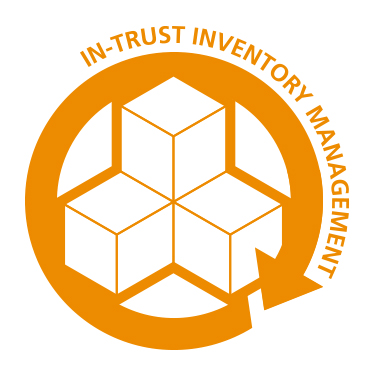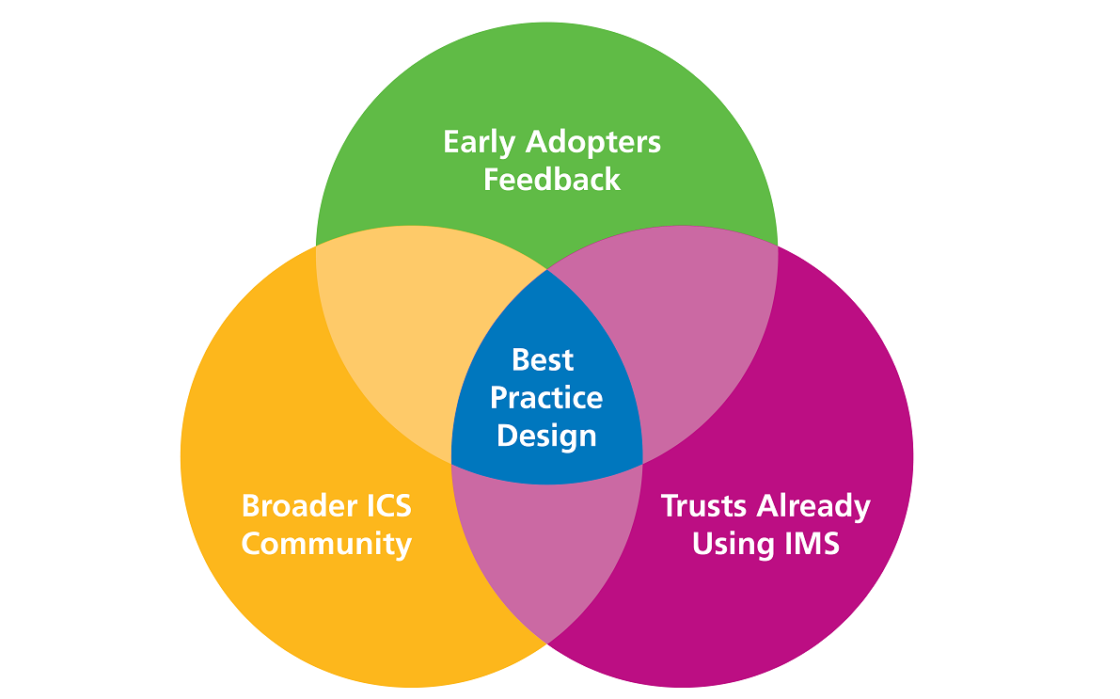Unlocking savings, improving patient care, and creating greater supply chain resilience has always been at the heart of our offering to the NHS.
Aligning with the priorities set out by NHS England (NHSE) and operational planning guidance for 2023 / 2024, we are starting work on the deployment of In-Trust Inventory Management Systems (IMS). We will be utilising inventory management and point of care solutions to connect the NHS and increase visibility of where inventory sits in the supply chain.
This programme also incorporates the outcomes of the Integrated Care System (ICS) pilot project that we recently collaborated on with 11 ICSs.
Across NHSE, there is estimated to be over £1 billion of shelf stock. Standardising the approach and capability of inventory management and point-of-care solutions is key to releasing significant one-off and recurring cost benefits.
Our goal is to deploy inventory management and point-of-care solutions to trusts who have limited capability in this area. The initial scope will provide the solutions to 20 NHS trusts over the next two years.

Effective, national-level management offers a significant opportunity to capture benefits, such as cash release, improved patient safety and experience, and enhanced process and workforce productivity with less time spent on administrative activities.
It will allow NHS Supply Chain to leverage a system-wide view to optimise visibility on national stock demand and consumption to improve supply chain resilience while supporting upstream supplier stock management and demand planning as well as enable national initiatives across Scan4Safety and GS1 standards adoption.
The rollout will bring efficiency and cash savings benefits at a local level, whilst nationally it is looking to join the dots up across the system from an inventory perspective. By leveraging technology to combine data, we can start to look across the NHS to improve the resilience of the supply chain.
Sara Ford
Executive Director, Strategy

We recognise that individual NHS trusts may have different requirements and so having access to three solutions will provide better opportunities to meet these needs, as well as align with ICS-level strategies and partnerships that may already be established. Deciding which partner solution would best fit your trust’s needs will be a collaborative process, however all of our partners’ systems solutions can provide a compliant inventory management and point of care solutions that include areas such as system integration and point of care scanning to help enable wider Scan4Safety objectives.
Programme Scope and Support
The scope of the programme can be segmented into four key components.
- The system and module – this includes inventory management, point of care and analytics functionality. The programme will focus on supporting trusts on obtaining visibility of high value medical devices (Class IIb and III) up to 75% by value.
- Implementation delivery support – a team of up to four will be deployed to provide technical and delivery expertise to trusts.
- Licensing and hardware – Licencing and hardware will be funded for the trust for the initial period.
- Maintenance and support – Ongoing programme support and training will be provided via our team, as well as technical support via the system provider.
Should your organisation be successful in being selected, we will work with you to define what the programme scope means to you.
To enable effective and successful deployment of an inventory management and point of care solution, we are offering two arms of support which exist to drive technical and delivery best practice.
To unlock maximum potential benefit to each trust, we have mobilised an Inventory Management Centre of Excellence, who are responsible for driving best practice across the programme in relation to change management, benefits realisation, data standards and IT integration.
Our centre of excellence team will consist of specialist resource, experienced in implementing inventory management system and mobilising digital transformation on a national scale.
To support delivery and guide trusts through the deployment, we have established a central team of skilled resource to provide project and change management support as well as inventory management and point of care expertise.
A central delivery team of up to four will be deployed to support each trust through their transformational journey and ensure optimal benefits realisation.
Community Working Groups
Our programme is underpinned by our Voice of the Customer Community Working Groups.

Our ‘Best Practice Design’ for IMS will be driven by a forum with many constituent parts from the healthcare community:
- Early Adopters – feeding back and sharing successes and challenges for suppliers to take learning from.
- Trusts Already Using IMS – collating their experiences with our own to get a more accurate picture.
- Broader ICS Community – including supply chain drive programme
Our goal is to create a design to work on both national and local level, taking the best practice approaches and combining them.
Contact IMS Team
As the programme progresses, further information will be made available on the opportunities to participate. Our aim is to improve understanding of the benefits for the wider system, and for your NHS trust to help shape and develop IMS.
If you would like to learn more about how to get involved in this programme, please contact:
In-Trust Inventory Management Systems (IMS) Team
Frequently Asked Questions – About The Process
We are engaging with trusts around the country to test interest and receptiveness to joining the programme currently and do not yet have a committed list of customers to share.
We are currently building and testing a multi-phase assessment approach to allow us to, in collaboration with our customers, identify which trusts are best placed to unlock value quickly through this programme and therefore become early adopters. This assessment methodology will be extended to all trusts who express an interest in joining the programme and that will allow us to prioritise for the 20 slots available.
We’re keen to move at pace in 2023 and start unlocking value, and would like to have committed early adopter trusts from September.
This will vary depending on trust readiness and resource. One of the historical challenges around adoption of inventory management systems has been each trust’s local capacity to deploy and embed new ways of working that are sustainable and can deliver recurring benefit. However, we can ensure support for trusts with central resource for up to 12 months, with additional support for a further 12 months to help embed the change and capture robust benefits to help sustain and expand the solution’’’s reach longer term.
Please contact us.
Please contact us.
Through our pre-implementation methodology we will recommend a solution as being the best fit for local trust needs. We do recognise that this a collaborative process and needs to be outcome-based. We also recognise the importance of aligning to wider ICS system strategies where they exist.
There will be an objective methodology against a range of criteria and weighted scoring to assess best fit of vendor to trust outcomes. This will then form part of dialogue with the trust to ensure a robust decision is made to best fit local trust needs. In doing so, we recognise that this is a collaborative process that needs to be outcome-based. We also recognise the importance of aligning to wider ICS system strategies where they exist.
Our design principle is that all three system solutions will be capable of meeting the desired outcomes and success criteria of our customers, inclusive of areas such as system integration and point of care scanning to help enable wider Scan4Safety objectives. We do recognise that different vendors will have different strengths that, as above, may be a better fit for trusts depending on their specific needs and readiness. We will work with trusts to determine best fit of vendor solution to customer need.
We are currently building and testing a multi-phase assessment approach to allow us to, in collaboration with our customers, identify which trusts are best placed to unlock value quickly through this programme and therefore become early adopters. This assessment methodology will be extended to all trusts who express an interest in joining the programme and that will allow us to prioritise for the 20 slots available.
Trusts will be required to follow a two stage selection process, consisting of a questionnaire in the first instance to determine suitability, followed by an on-site visit to ascertain readiness for the programme. Depending on the outcome of this process, the trusts may be recommended to address any immediate actions before proceeding further with the programme or asked to sign a letter of intent. This letter will outline the terms of the commitment required by both parties to support scoping and baselining of activities, including development of a business case if required. Once key elements such as scope, resource and costs has been agreed, the trust will be required to sign a memorandum of understanding with NHS Supply Chain. This will detail the agreement between both organisations, including the pre-requisites for a successful deployment, such as senior project sponsorship and dedicated trust resources, like a Project Manager.
In order to be successfully selected as one of the 20 trusts, each trust must follow the selection process outlined. Additionally, to support your case as a deployment site we encourage that you consider key pre-requisites for the programme such as, financial and clinical sponsorship and resource to ensure your organisation has the capacity and capability to support locally.
This will depend to some extent on the local systems that you use for both procurement and clinical outcomes. We will work with you to define local integration requirements and bring the learnings of other trusts to the table through peer discussion and best practice.
From initial investigations, it’s likely that each trust will need to consider integration with their current Enterprise Resource Planning (ERP) system, in a lot of cases, Oracle and their Catalogue Management System. In addition, it would be useful to consider integrations with Trust Patient Administration Systems (PAS), Electronic Health Records (EHR), or Theatre Management System (TMS) to allow for Point of Care data capture of patient information.
NHS Supply Chain will provide a team of up to four to support the change management. Ideally we would look to the trust to replicate this level of support providing project management, clinical, data / IT and supply chain support. NHS Supply Chain will work with you in the early stages to define what your resourcing commitment needs to look like.
NHS Supply Chain will provide the hardware for scanning purposes. The trust will own that hardware and will be responsible for any ongoing device maintenance that is required. System maintenance will be a combination of the solutions partner and NHS Supply Chain during the programme and ongoing support will be determined as part of the handover at the end of year two.
NHS Supply Chain will provide support to trusts alongside our partner vendors for the full two years of the contract period. Beyond this, trusts will be able to liaise directly with their IMS vendor as per their agreed contract and Service Level Agreements. NHS Supply Chain will also continue to provide support in relation to inventory management and supply chain resilience as per the current arrangements.
After the first two years, as part of a formal handover, the trust will take ownership of the software licence with their IMS vendor. The handover will also provide a benefits analysis and recommendations for a sustained Return on Investment (ROI).
Frequently Asked Questions – Multiple Inventory Management Systems (IMS)
Firstly, we want to listen, through an Expert Reference Group, to your experiences of implementing, and, with your agreement, share those experiences with trusts just starting out on this journey. Secondly, we’d like to talk to you about how, in conjunction with NHS England (NHSE), we can share inventory management data across the system to better tackle resilience and supply challenges in partnership with you. Finally, through our developing IM Centre of Excellence, we’re keen to work with IM users to develop a best practice approach to getting the most of your current investment in IM.
Capacity: we want to ensure we can make IMS available to all customers who sign up to the programme without the risk of being constrained by the capacity of any one provider
Fit: we recognise that different customers will have different requirements and certain solutions may provide a better fit for these, accounting also for any ICS-level strategies and partnerships already established
Market impact: We recognise that there is a small market nationally for capable healthcare inventory management solution providers. We’re keen at this stage to unlock value for the NHS quickly at the same time as maintaining market dialogue as we look to the strategic future for IM delivery beyond this initial two year scope of activity.
The initial rollout will focus on trusts with no IM capability currently. Trusts that use eDC and eDC Gold would be welcome to discuss how being part of the programme can help them progress their inventory management capability and vision.
Frequently Asked Questions – Why NHS Supply Chain IMS?
We recognise that two of the historical challenges to getting IM up and running have been local funding and dedicated resource. Partnering with NHS Supply Chain allows us to support you with overcoming both of these, as well as providing a more turnkey approach to deployment that provides economies of scale, and a more consistent approach to benefits realisation.
As a result of challenges around national visibility of products during COVID-19, such as PPE supply, and recognition of the importance for trusts to be reducing non pay costs and finding efficiencies in their supply chain, Inventory Management has been recognised as a crucial tool in delivering efficiency locally, regionally and nationally.
NHS Supply Chain has worked with IMS vendors to secure a fair price for both the software and their implementation support. If trusts believe it will be cheaper for them to go directly to these vendors, we would welcome the opportunity to discuss in further detail how this might be possible.
Working with NHS Supply Chain will provide additional resourcing benefit to a trust, which has been repeatedly highlighted as one of the ongoing blockers to a successful IMS implementation. Trusts will also be supporting a national initiative to provide a turnkey implementation approach that the rest of the NHS will benefit from
eDC Gold delivers targeted value to trusts not in a position to adopt market leading systems but has a number of significant limitations that restrict the customers’ ability to realise benefits at scale. Full integration into trust procurement and theatre systems, and the ability to scan implants to patient / surgeon / procedure being examples. NHS Supply Chain’s core competencies are not in software development, and as our strategy increasingly pivots to a partnership approach to support the NHS, working with the market to deliver ‘best in breed’ capability to our customers is critical going forward.
Other Frequently Asked Questions (FAQs)
NHS Supply Chain will be providing a system agnostic deployment approach with a focus on delivering the right outcomes for the trust, regardless of solution provider. There will be a structured methodology for allocating a system to a trust but though our consistent delivery approach we would look to maintain the same quality of business outcomes regardless of solution partner.
We will provide a short form business case template which will help identify local costs against key categories such as integration and resource. As per NHS England (NHSE) operational planning guidance, there will be funds designated to each trust to help mitigate local costs.
